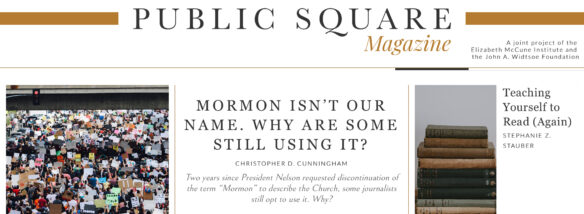Part II. Nehor Rises Again
Jacob Z. Hess
Note: I believe healthy deliberation includes space for strong critique, passionate contestation, and efforts to persuade. I do all of that here without questioning the sincerity, intelligence, or intentions of those with opposing views. Although I believe most people are doing the best they can to love, to help, and to understand, I also believe the patterns outlined in these essays are little considered or understood in the broader discourse.
That’s why I write. These are perilous times for America. In my view, anyone willing to preserve space for thoughtful people to disagree on these and other matters (no matter your actual position) is part of the solution – and helping lay the foundation for our collective future. Anyone contributing to a recession of this same space (no matter your position) is part of the problem – and helping lay the foundation for even greater misunderstanding, hatred and violence than we have yet seen in our country.
Latter-day Saints revere the Book of Mormon for its role in re-establishing truth that was lost, or made dim, by a Biblical interpretation process that confused or omitted certain “plain and precious” parts of God’s message to the world.
One of the lesser-appreciated truths clarified in the Book of Mormon is the role of anger in subverting the long-term trajectory of both individuals and entire communities, through a variety of means. For instance, virtually all scriptural references to a people being “stirred up to anger”[1] happen in the Book of Mormon.
In part I, I summarized the way in which Mormons Building Bridges (and other allied organizations) became a persuasive force that convinced many Latter-day Saints to adopt the larger narrative of the gay rights movement, along with its accompanying anger (and built-in explanations for that anger).
In that first part, I only began to touch on problems with that larger narrative frame – mostly focusing, instead, on how these new ways of seeing identity and sexuality became a significant wedge for so many people in their faith – effectively distancing so many precious brothers and sisters from their spiritual home, and leaving them wounded in their attachment to anything related to the same. As one woman told me recently, “I’ve got to stay away from the Church…it’s just too toxic for me!”
In what follows, I round out the picture, introducing an alternative way to make sense of this movement that has unfolded and overflowed into members’ lives – one that contrasts sharply with the framework outlined in Part I (true-identity discovery in a larger movement about liberation and civil rights that welcomes any allies willing to stand by their bravery).
Continue reading →

